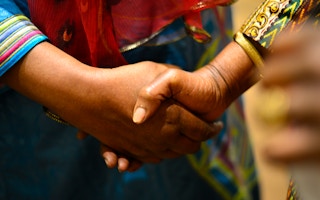Other countries making strides
Dominica, Chad, Mali and Uzbekistan have also made significant progress in recent years.
A new gender empowerment law in Sierra Leone, where women hold 13 per cent of seats, will ensure they make up at least 30 per cent of the parliament and cabinet after elections in June.
Worldwide, only a fifth of government ministers are women - and they are often given portfolios that focus on health, family, social affairs or the environment.
Countries that have appointed a female-majority or an equal-gender cabinet include Spain, Albania, Colombia, Rwanda, Canada and France.
Countries doing badly
Yemen has no women in its lower house, and just one in its upper house.
Vanuatu’s parliament welcomed a lone female lawmaker last year, its first since 2008.
Women hold fewer than 10 per cent of seats in more than 20 countries including Nigeria (3.9 per cent), Qatar (4.4 per cent) and Iran (5.6 per cent).
Despite having the world’s first female prime minister in 1960, Sri Lanka is another laggard, with women making up about 5.3 per cent of parliament for the last 25 years.
Although Japan saw record numbers of women elected in 2022, they still hold only 10 per cent of seats in the lower chamber - way below other big economies.
Countries going backwards
Algeria and Tunisia are the main backsliders.
In 2021, Algeria saw the share of women in parliament fall from 26 per cent to 8 per cent following changes to its quota system.
The setback came despite women accounting for 37 per cent of candidates.
The IPU said changes to the election law were exacerbated by blatant discrimination, with women’s faces often blurred in campaign materials and their photos replaced with blank avatars on ballot papers.
In Tunisia, the number of female lawmakers is set to plunge following a recent election in the North African country - traditionally seen as a regional leader on women’s rights.
As in Algeria, Tunisian women say changes to the electoral system have made it harder for them to contest and win seats.
In Afghanistan, the Taliban Islamist group has erased women from public life since seizing the country in 2021.
Before the takeover, women had held 27 per cent of seats in the now-defunct National Assembly. Many former women MPs have fled the country.
This story was published with permission from Thomson Reuters Foundation, the charitable arm of Thomson Reuters, that covers humanitarian news, climate change, resilience, women’s rights, trafficking and property rights. Visit https://www.context.news/.










